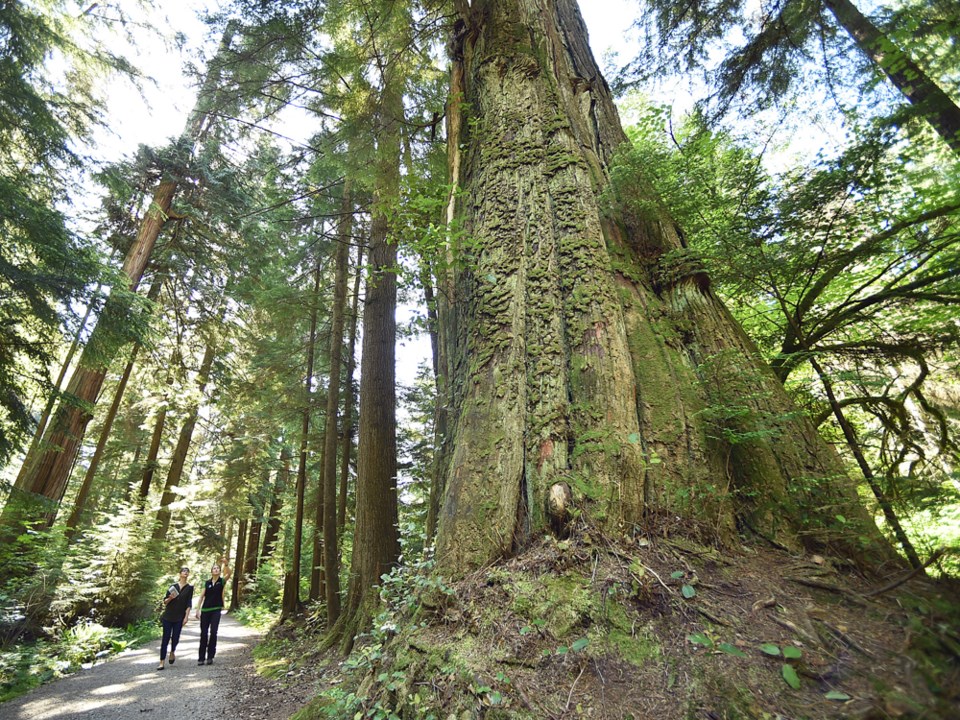The Vancouver Board of Parks and Recreation says it has not accounted for thousands of trees cut down in Stanley Park.
A Feb. 9 letter from freedom of information manager Kevin Tuerlings said “our office has confirmed with Park Board staff that there are no records responsive to your request for an inventory of trees designated for removal and trees that have been removed.”
On Nov. 29, the park board announced in a news release that 160,000 trees would be chopped because of the Hemlock looper moth infestation and fears of a wildfire. In September, it secretly hired forestry consultancy B.A. Blackwell and Associates Ltd. of North Vancouver on an emergency, no-bid contract to manage the operation, estimated at almost $7 million.
Norm Oberson, owner of Arbutus Tree Service and a member of the Trees of Vancouver Society board, said it is standard to take inventory of trees needing removal or pruning.
”You don't cut a tree down in a park unless it's been assessed by a risk assessor, a provincially certified risk assessor or an [International Society of Arboriculture] qualified tree risk assessor,” Oberson said. “It sounds like they really haven’t followed the due process.”
A reporter applied Nov. 22 for the tree inventory, tree removal plan and arborist’s report, but the city sent a $450 invoice almost a month later, claiming it needed 18 hours for "locating, retrieving and producing records, and preparing them for disclosure.” The Office of the Information and Privacy Commissioner notified the city’s FOI office last Thursday that it had assigned an investigator. At almost 5 p.m. on Friday, Tuerlings notified a reporter by email that the Blackwell report had been published on the city’s website.
Titled “Stanley Park Hemlock Looper Impact and Wildfire Risk Assessment,” the 37-page report directed to Joe McLeod, the manager of urban forestry, is dated Jan. 24 — almost two months after the park board announced the operation to cut a quarter of Stanley Park’s trees.
Blackwell reported that pest infestation killed or severely defoliated 20,300 trees with a diameter greater than 20 centimetres and 166,000 trees that are 20 cm or less in diameter. A majority of trees affected were western hemlock, but Douglas firs and western red cedars had been impacted to a lesser extent.
Mitigation or management of at least 90 per cent of the park’s forest areas “is critical in the short term,” so Blackwell recommended work between October and March because of decreased public use and to avoid bird-breeding season. Mitigation efforts must also coordinate with digging for the Metro Vancouver Capilano 5 water main, expected to begin later this year.
The report said risk to human safety would increase over the next three to 10 years. As trees die, branches, tops and whole trees fail, the amount of dry woody surface fuel would build up, increasing the risk of a wildfire and jeopardizing the vision of Stanley Park as “a resilient and diverse coastal forest.”
“Wherever possible, larger trees and forest stands will be retained and only removed if they pose a risk to public safety,” said the Blackwell report. “Generally, the larger trees throughout the Park have not been as heavily impacted by the looper and do not contribute significantly to wildfire risk. Trees that have been only lightly or moderately defoliated and have a higher likelihood of survival should be monitored.”
Three-quarters of the park — 263 hectares — is forested, but was affected by 1962’s Typhoon Freda and the 2006 Hanukkah Eve windstorm. The report rated 24 per cent of the park as high or extreme wildfire risk and 60 per cent moderate, with concern elevated due to the recent trend of hot, dry summers, high numbers of park visitors and unauthorized/illegal campers.
“Areas of high wildfire risk are concentrated around Stanley Park Drive, Prospect Point and high-use areas at the south end of the Park,” the report said. “Areas of very high risk are found between Prospect Point and Third Beach, north of Lost Lagoon, and near Pipeline Drive, due in part to the history of frequent human caused fire ignitions.”
Though the report is dated Jan. 24, certain content strongly suggests it was drafted ahead of last summer’s closed-door decision by bureaucrats to green light the project.
Field work was undertaken “on multiple days between March 7 and April 5, 2023.” As of last April, 30 per cent of trees greater than 20 cm in diameter had been killed or severely defoliated and an additional 36 per cent had been moderately defoliated.
The section on Wildfire Response said “No data is available for July and August 2023, but in June alone, City of Vancouver Fire and Rescue responded to (approximately) 39 human-caused fire ignitions in Stanley Park.”





